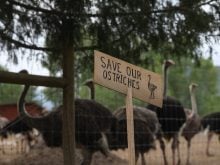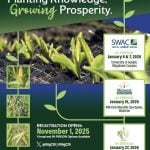Southern Alberta producers are advised to scout for the cereal leaf beetle after small numbers were found in the Lethbridge and Taber areas.
Keith Merrifield of the Canadian Food Inspection Agency in Lethbridge said a low number of these insects were found during a field survey this year.
Surveys during the last three years had not uncovered any populations.
“Once you get it, it pretty well sets up residence,” he said, citing the need to control it before it spreads.
The beetle is a quarantine pest in Canada, so a domestic movement certificate is now required for all hay and straw shipments moving out of these areas.
Read Also

VIDEO: Agritechnica Day 4: Robots and more robots, Nexat loves Canada and the trouble with tariffs
Agritechnica Day 4: Robots and more robots, Nexat loves Canada and the trouble with tariffs.
The insect, native to Eurasia, was first seen in British Columbia’s Creston Valley in 1999 and arrived in Montana in 1990, said Agriculture Canada research scientist Hector Carcamo.
There are no registered chemicals to manage the beetle, but Carcamo said biological controls are promising. The tetrastichus julis, a small wasp, has been used to control their numbers effectively in Montana.
Adults lay eggs on the top surface of leaves, with the larvae resembling common slugs. Both larvae and adults feed on the leaves.
Large infestations can make fields take on a “frosty appearance,” Carcamo said.
The pest feeds on cereals and grass, eating small strips out of the leaves. It will also feed on corn, timothy grass, wild oats and quackgrass.
“If they have high enough populations, they can decrease the production of the crop,” he said.
The beetle can reduce yields by as much as 35 percent in wheat and 75 percent in oats.














